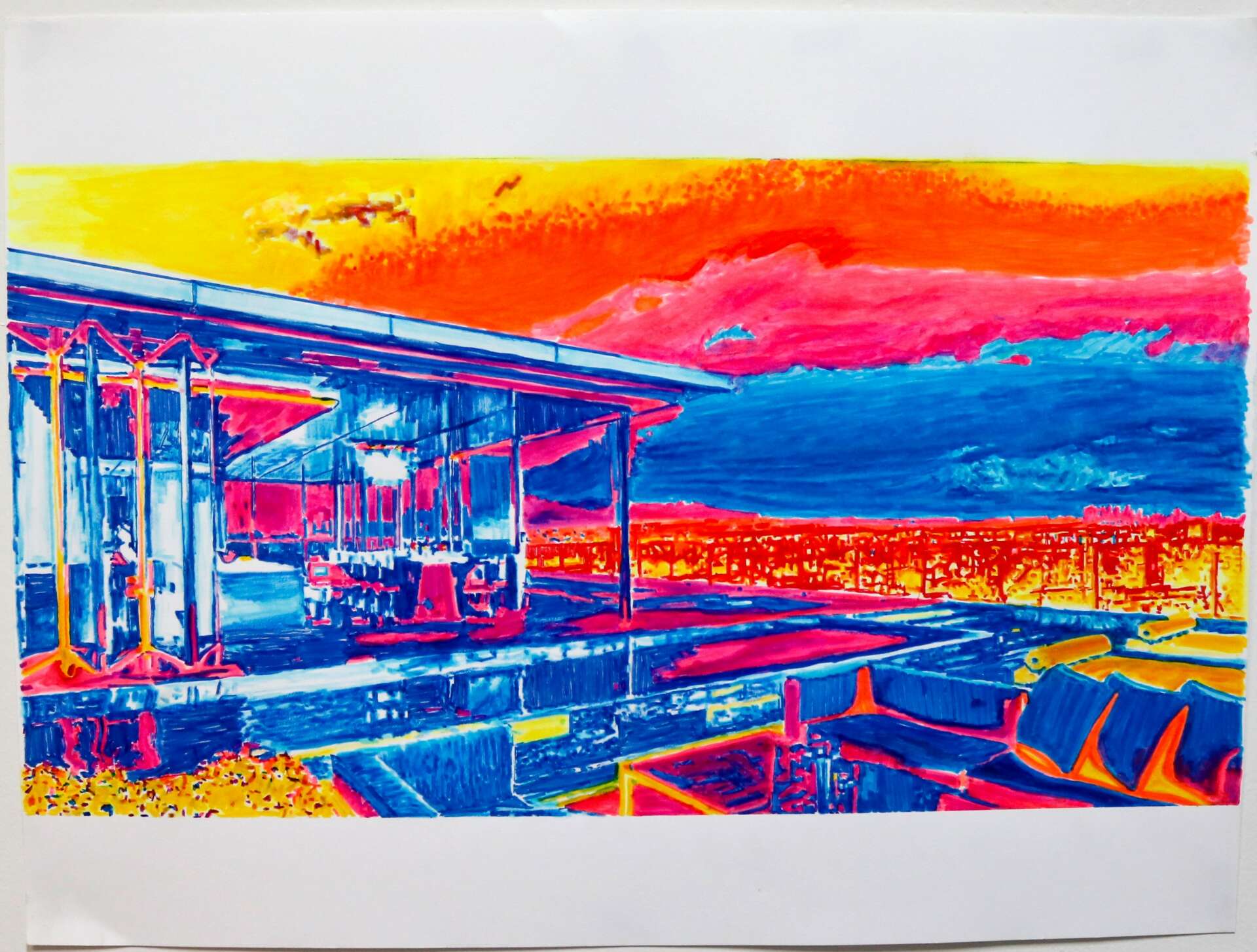We’re excited to introduce you to the always interesting and insightful Michael Shaw. We hope you’ll enjoy our conversation with Michael below.
Michael, thanks for taking the time to share your stories with us today Do you wish you had waited to pursue your creative career or do you wish you had started sooner?
If I had to do over again, I would have begun my so-called “creative career” later than I did, and here’s why:
when I graduated from UCLA, with a BA in studio art, in the spring, I followed that up with grad school at Hunter College beginning the following late summer/fall. That was too soon for someone as green as I was. I think I would have gotten more out of graduate school if I had more life experience before I started. I could have done something like worked as an assistant for an artist, worked at a photo lab, even something as relatively simple as work at a cafe/coffee joint would have been a good way to follow my undergraduate years.
Had I started grad school a few years later, after “being out in the world,” I would have appreciated my grad school experience more, and I (hopefully) would have had a better sense of why I was there and what exactly I wanted to get out of it.
I also would have liked to have done at least a bit more research about my grad school options. I only applied to 3 programs, and I think it’s best to both have several options AND to learn more than I did about who was on the faculty and who I might want to study with, other than just the fact that I would be getting an NYC studio as part of my MFA program.



Awesome – so before we get into the rest of our questions, can you briefly introduce yourself to our readers.
There have been several seemingly small synchronous moments which have directed my art making, and life. It’s sometimes just a suggestion or recommendation: a listener of my podcast recommended a cultural critic’s book; an artist whom I reached out to recommended a curator who in turn recommended a grass-roots organization I checked out and eventually joined; when I was working on making paintings and works on paper involving stencils and airbrush, a studio mate at the time suggested cyanotypes, which have since become a big part of my brand, my creative vision.
My work at the intersection of painting, drawing, photography and art & activism is a niche all my own.
When people see my cyanotypes, they usually are curious and unsure how they were made- not just the cyanotype process itself, but even the specific processes I use to make my specific variation on cyanotype images= all featuring forms of residential housing, often in process.
I’ve also been making neon-bright works on paper guided by spectral imaging- a tool sometimes used by building inspectors or engineers to measure the hot and cool spots in a structure and determine if interiors are properly insulated or if there’s heat leakage. I’ve been applying this cool-to-hot-spectrum to visually speculate on the relative occupancy of homes and/or neighborhoods that may be given over to shell investments…which is to say that the homes are owned, but the owners – shell companies or otherwise hidden LLCs – aren’t occupying them, thus those interiors are represented by blues and other cool colors.



How can we best help foster a strong, supportive environment for artists and creatives?
This is a massive and complicated question, but one that’s always worth thinking about. The society we live in is a capitalist one, specifically a late capitalist one, which for the most part means, as far as financial stability, a pyramidal structure in which a relatively tiny segment of society is overflowing with money and the largest percentage is in a more precarious financial standing- especially artists.
Grants for artists living in the U.S. are relatively sparse and most of them are very, very competitive (mimicking the pyramidal structure). The way OUR society can best support artists is by dedicating a much higher percentage of its overall budget to artists. A few strong examples of countries that have strong support for artists are Austria, France, Finland and even our neighbor Canada.
Most artists in the U.S. depend on day jobs to survive, which means they’re spending less time on their art. With something akin to a Universal Basic Income for artists, one that is sustainable, and/or a vastly more robust grant system, wherein any artist that needed one could apply and get one, we would be able to experience, hopefully, a far more thriving artist ecosystem.
Is there something you think non-creatives will struggle to understand about your journey as a creative?
Let’s change our use of the word ‘creative’ with ‘artist,’ because I think that’s a useful distinction. Artists usually don’t make a living from their art- so while it can be a career, as it is for me, it’s not one that I always expect will sustain me financially, though that can still be a significant part of the overall goal. Either way, whether you’re an artist who is making a living from your career, or keeping a career going despite making a living from it, one of the most important aspects of your career to invest in is networking. Networking, which is often very challenging for many of us introverted artists, remains one of the key things you can invest in to sustain your career. It’s a tricky prospect, but the sooner you’re able to lean into that fact, and act accordingly, the better off you’ll be as an artist
Contact Info:
- Website: https://www.michaelshawstudio.com
- Instagram: @michaelshawstudio
- Facebook: https://www.facebook.com/michael.shaw.3994/
- Other: https://artsharela.org/the-ellsworth-artist-residency-program/
Image Credits
Studio portrait credit: Ree Magaña


